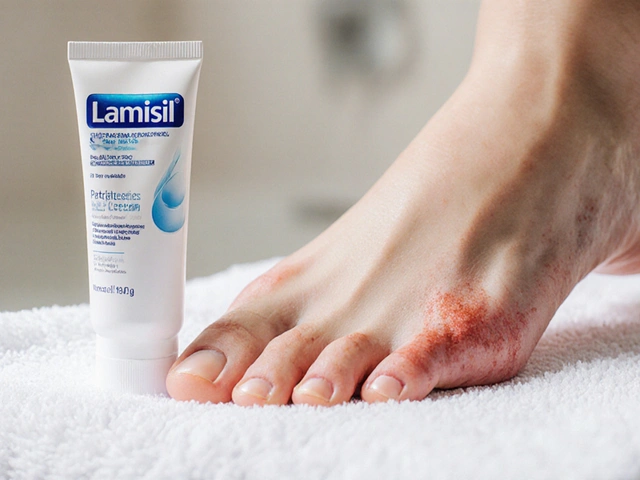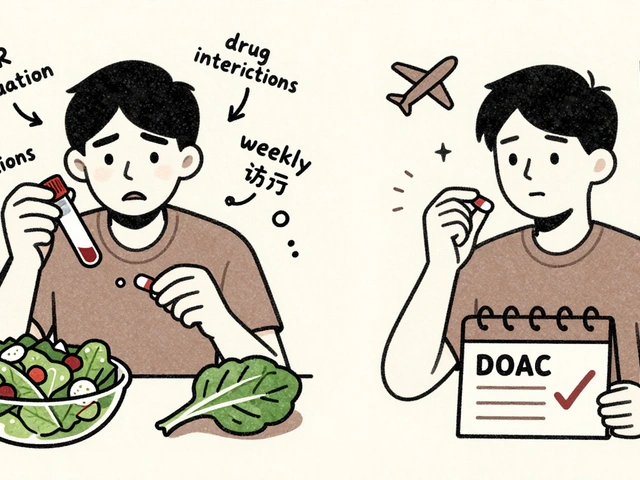Neurontin Alternatives: What Works, What Costs, and How to Choose
If you’ve been prescribed Neurontin (gabapentin) for nerve pain, seizures, or restless legs, you’ve probably wondered whether there’s a cheaper or more tolerable option. You’re not alone – many people hit the same snag. The good news? There are several proven alternatives that can give you the same relief without breaking the bank.
Why Look for an Alternative?
Neurontin is effective, but it can cause dizziness, swelling, or mood changes for some folks. Insurance coverage varies, and the out‑of‑pocket price can climb quickly, especially if you need a high dose. An alternative may have a lower price tag, fewer side‑effects, or a dosing schedule that fits your routine better.
Top Alternatives to Neurontin
Pregabalin (Lyrica) – Often the first drug doctors suggest when gabapentin isn’t enough. It works on the same calcium channels, so it reduces nerve‑pain signals similarly. The downside is that it can be pricier, but generic versions are becoming more common and can save you up to 30%.
Baclofen – A muscle relaxer that also dampens nerve firing. It’s especially useful if you have spasticity along with pain. Baclofen is available as a cheap generic and can be taken in lower doses to avoid sedation.
Valproic Acid (Depakote) – While primarily used for seizures, many patients report good nerve‑pain control. It’s a broad‑spectrum option and often covered by national health plans, making it budget‑friendly. Watch for liver‑function tests if you stay on it long‑term.
Carbamazepine (Tegretol) – A classic anti‑seizure drug that also calms nerve‑pain spikes. It’s cheap in generic form, but you’ll need regular blood checks for blood‑count changes.
Topical Options – Creams or patches with lidocaine or capsaicin can be combined with lower oral doses. They target the pain locally and avoid systemic side‑effects entirely.
Each of these alternatives has its own pros and cons. The best choice depends on your specific condition, how your body reacts, and what your insurance will cover.
How to Switch Safely
Never quit Neurontin cold. Talk with your doctor about a taper plan – usually dropping the dose by 100‑300 mg every few days works fine. At the same time, your doctor can start the new medication at a low dose and slowly ramp it up. This overlap reduces the risk of breakthrough pain or seizure spikes.
Keep a simple chart of any new side‑effects you notice. Common ones include mild drowsiness with pregabalin, dry mouth with baclofen, or occasional nausea with valproic acid. If something feels off, reach out to your prescriber – adjustments are often quick and easy.
Saving Money on Your New Prescription
Shop around at reputable online pharmacies that verify Australian pharmacy credentials. Look for PBS (Pharmaceutical Benefits Scheme) listings – many of the alternatives are on the PBS, which can cut the price by up to 80%. If you have a private health fund, ask them for a ‘generic substitution’ and you might get a bigger rebate.
Don’t forget about discount cards or bulk‑buy programs. Buying a 90‑day supply at once usually costs less per tablet than a 30‑day supply, and it means fewer trips to the pharmacy.
Bottom line: Neurontin works for many, but it’s not the only game in town. By understanding how each alternative works, checking side‑effects, and shopping smart, you can keep your nerve‑pain or seizure control without overspending. Talk to your healthcare provider today and see which of these options fits your lifestyle best.

7 Alternatives to Neurontin: Options That Could Make a Real Difference
Looking for alternatives to Neurontin? This guide explores other treatments you can try for nerve pain, from topical patches to oral options. Each one has its own set of benefits and drawbacks, so you'll get a clear idea of what might suit your needs. Easy-to-read pros and cons highlight what to expect. Make a more informed choice about managing your pain.




